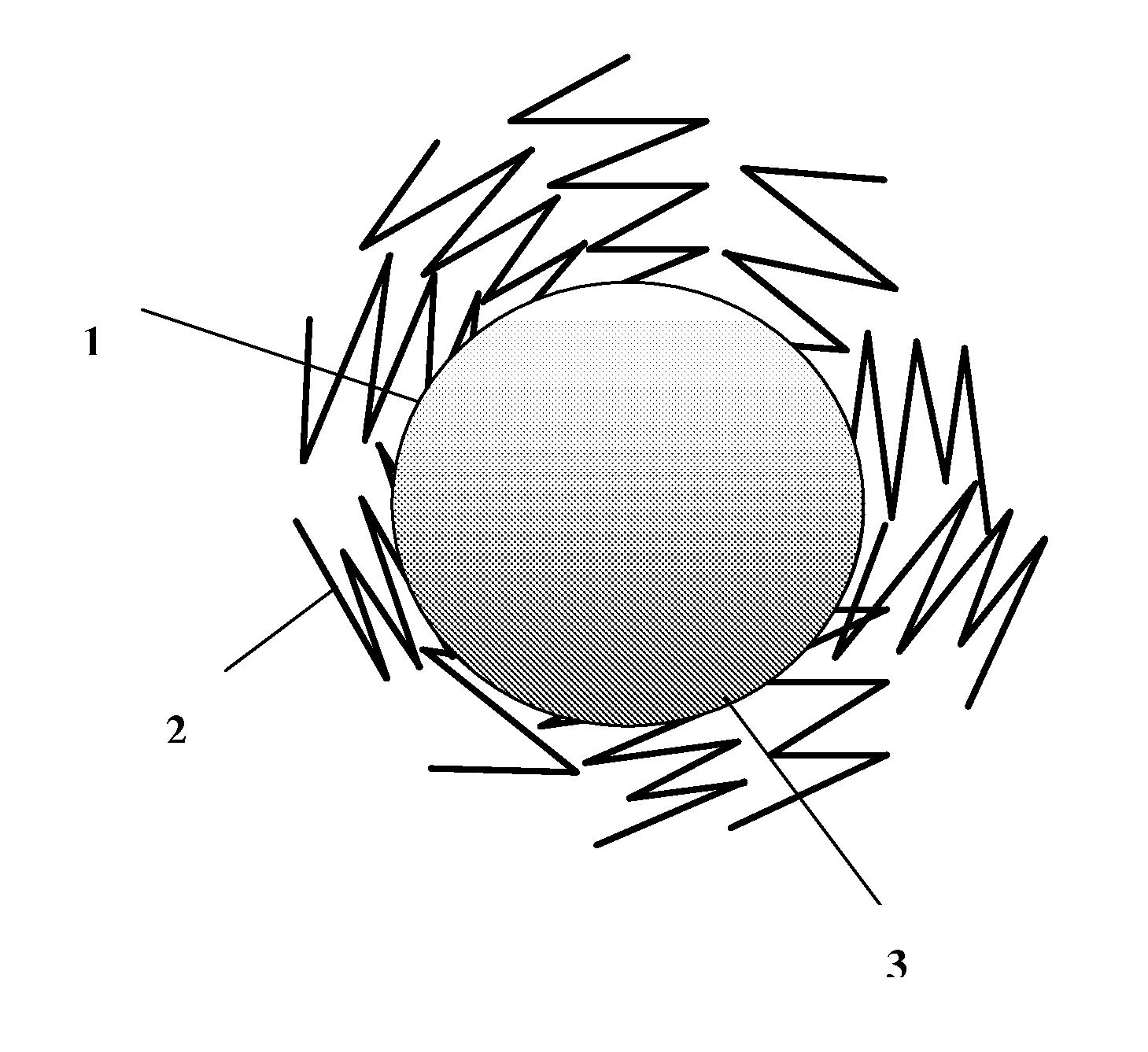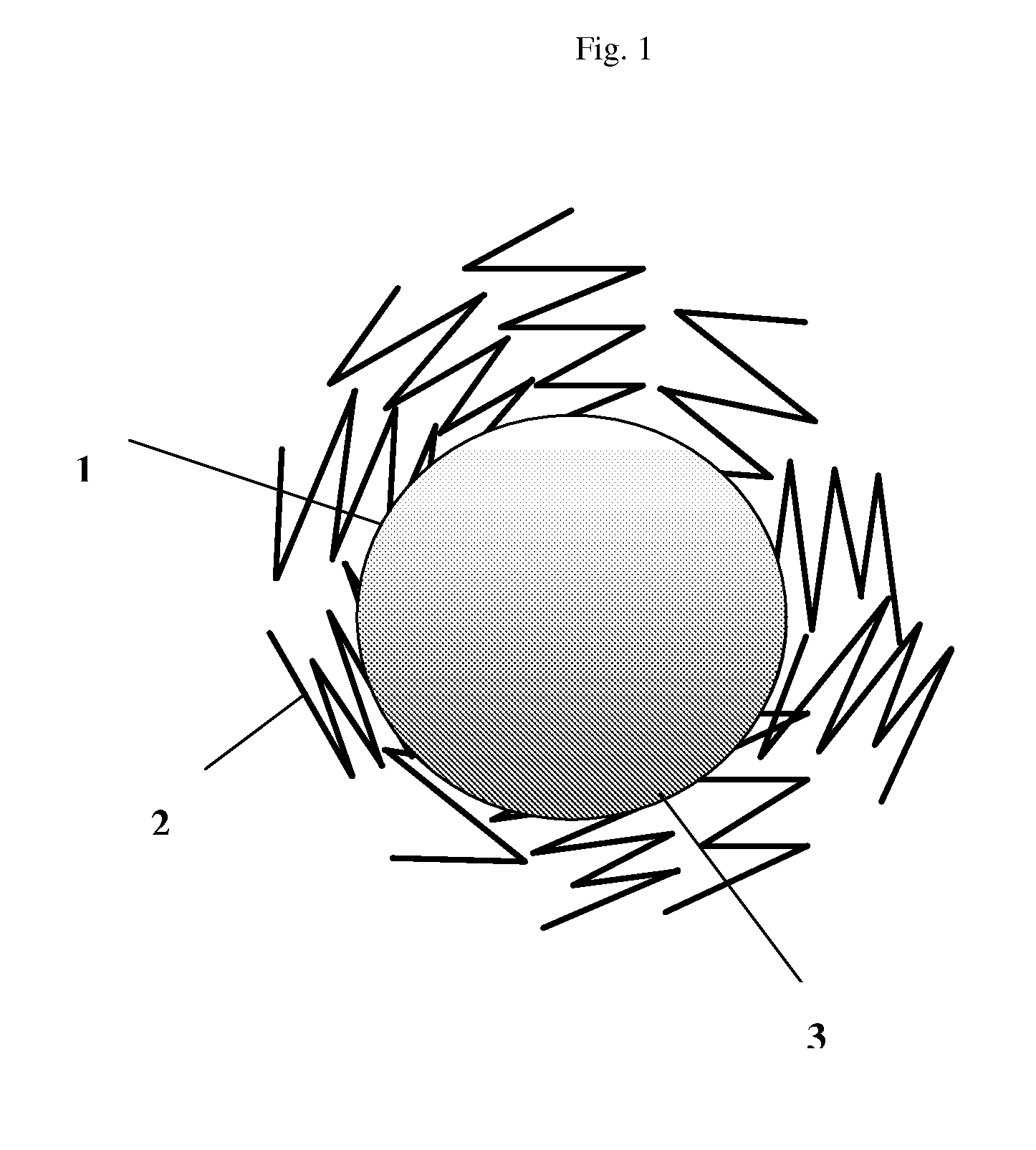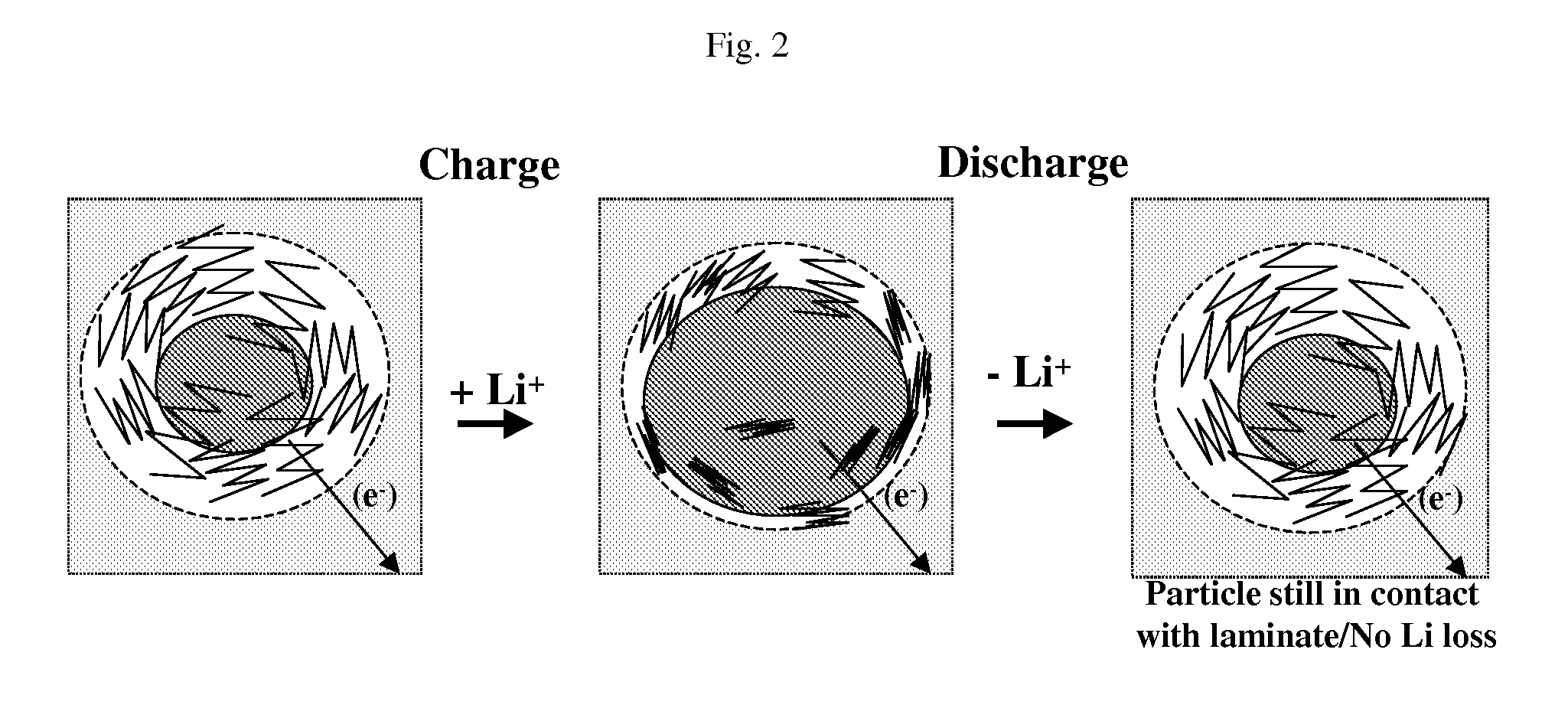Composite for li-ion cells and the preparation process thereof
a technology of li-ion cells and composites, applied in the direction of non-metal conductors, cell components, conductors, etc., can solve the problems of excessively large loss of capacity, loss of electronic contact, and diminishing or losing the contribution of li-ion cells to the reversible capacity of cells, so as to prevent oxidation
- Summary
- Abstract
- Description
- Claims
- Application Information
AI Technical Summary
Benefits of technology
Problems solved by technology
Method used
Image
Examples
example 1
Lithium-ion Conducting Glass and Expanded Graphite Surface Modified Li1.05Mn1.95O4
[0051]The same Li1.05Mn1.95O4 powder used in Comparative Examples was used as the base lithium manganese oxide spinel material in this example of the method of this invention.
[0052]The solid-state coating method was used to treat the base material as follows to produce a final composite material containing approximately 2% by weight, lithium-ion conducting B2O3-based glass and expanded graphite. 0.4 g LiF / LiOH / Li2B4O7 in a molar ratio of 1:4.6:0.9, 0.4 g of expanded graphite (Superior Expanded Graphite), and 39.2 grams of the base Li1.05Mn1.95O4 cathode material were weighed out and placed into a sealed roll mill container. The container and its contents were placed onto a Roll Mill apparatus and roll-milled for 12 hours. The mixture was then fired in air at 500° C. for 2 hours.
example 2
Lithium-ion Conducting Glass and Expanded Graphite Surface Modified Li1.05Mn1.95O4
[0053]The same method as for Example 1, only the percentage for which the surface being modified is different, was used for this example. 1 g LiF / LiOH / Li2B4O7 in a molar ratio of 1:4.6:0.9, 1 g of expanded graphite (Superior Expanded Graphite), and 38 grams of the base Li1.05Mn1.95O4 cathode material were weighed out and placed into a sealed roll mill container. The container and its contents were placed onto a Roll Mill apparatus and roll-milled for 12 hours. The mixture was then fired in air at 500° C. for 2 hours. This produces a final composite material containing approximately 5% by weight of lithium-ion conducting glass and expanded graphite.
example 3
Non-lithium-ion Conducting Material and Expanded Graphite Surface Modified Li1.05Mn1.95O4
[0054]The same Li1.05Mn1.95O4 powder used in Comparative Examples 1 and 2 was used as the base lithium manganese oxide spinel material in this example of the method of this invention. The aqueous coating method was used to treat the base material as follows to produce a final composite material containing approximately 5% by weight, B2O3 and expanded graphite. 1.77 g of boric acid (H3BO3, 99.99% from Alfa Asha), which will produce 1 g of non-lithium ion conducting material, B2O3, in final product, was weighed out and dissolved into ˜10 ml distillated water. 1 g of expanded graphite (Superior Expanded Graphite) was also weighted and added to the above solution. Last, 38 grams of the base Li1.05Mn1.95O4 cathode material was weighed out and slowly added into the solution. The slurry, along with fifty ceramic mixing balls, was then placed into a sealed roll mill container. The container and its c...
PUM
 Login to View More
Login to View More Abstract
Description
Claims
Application Information
 Login to View More
Login to View More - R&D
- Intellectual Property
- Life Sciences
- Materials
- Tech Scout
- Unparalleled Data Quality
- Higher Quality Content
- 60% Fewer Hallucinations
Browse by: Latest US Patents, China's latest patents, Technical Efficacy Thesaurus, Application Domain, Technology Topic, Popular Technical Reports.
© 2025 PatSnap. All rights reserved.Legal|Privacy policy|Modern Slavery Act Transparency Statement|Sitemap|About US| Contact US: help@patsnap.com



